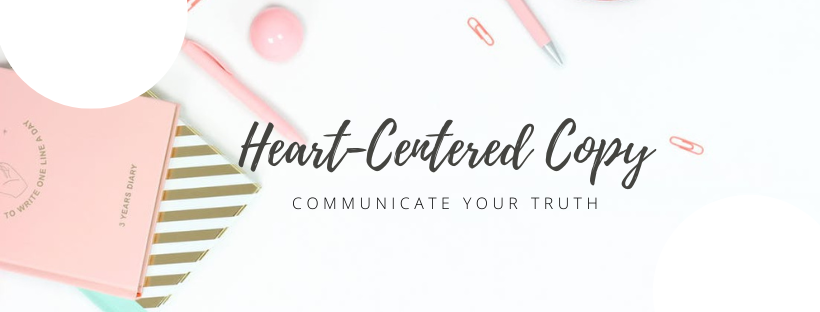 When done right, email marketing will encourage your target audience to take some form of action that generates more leads and sales for your business. It will also improve engagement and help you build a strong relationship with your customers.
When done right, email marketing will encourage your target audience to take some form of action that generates more leads and sales for your business. It will also improve engagement and help you build a strong relationship with your customers.
A well thought out marketing plan will help lead your business to success but how do you know that you’re using the best possible plan? The following information will help you create the best email strategy for your business.
Set Clear Goals and Choose your Email Type
In order to stay focused and reach your goals, you have to know what you hope to achieve with your email marketing plan. Businesses send out different types of emails based on the type of response they hope to receive from their target audience. You have to know what you expect from your campaign before you can determine which type of email to use.
Some of the most common goals include:
- Increase sales
- Boost engagement
- Build relationships with new subscribers
- Maintain a good relationship with existing subscribers
- Generate interest in your products
- Improve click-through rates to increase conversions
- Grow your email list
Setting clear goals will help you determine which type of emails to use so you’re not just randomly sending out content that may or may not be relevant to the receiver. It’s the best way to ensure you’re using the best email strategy to get the desired results.
The main types of marketing emails include:
- Newsletters – These are the most popular and they’re designed to provide subscribers with useful information that will create interest in the products or services you provide. They will help draw attention to your business and encourage subscribers to visit your site.
- Seasonal emails – The holidays are a great time to drum up business and sending out seasonal emails is a great way to get your point across. Use these emails to offer subscribers special deals on all the wonderful things they need or want for the holidays.
- Promotional emails – Send out promotional emails to tell your subscribers about any great deal you’re offering throughout the year, not just for the holidays. This will also include information about any new products or services you plan to offer.
- Automated Drip Emails – When a subscriber visits your site and shows an interest in specific items but do not follow through with a purchase, this type of email is designed to encourage them to come back and complete the process. The information in the email will depend on what type of action the subscriber took while visiting your website so it will change often. You may also choose to send out automated drip emails on a regular schedule to help encourage subscribers to visit your site and learn more about your products.
- Transactional emails – These are the emails you’ll send out to confirm sign-ups or welcome new subscribers. They also include confirmations for orders placed and purchases made or emails that acknowledge any changes the subscriber makes to his or her information.
When setting goals for your email marketing strategy, be sure to set a time limit to meet each goal. This will help you see if your strategies are working or not. If you’re not even close to your goal by the end of the timeframe, then it’s time to change strategies. Be realistic when setting goals but strive to accomplish all you can in the shortest amount of time.
Know Your Audience
Before you can go any further, you must know your audience. These are the consumers that have a real interest in or need for the products and services you provide. It’s vital to identify and target these consumers. They are the ones that will respond best to your email marketing strategies and the ones most likely to make a purchase.
To help ensure you’re reaching the right audience with your email campaign, gather all the information you can find about your current customers. Look at things like location, demographics and special interests so you can see what they have in common. Learn what made them choose you over your competitors and see what items were purchased the most.
If you’re new to email marketing, you can gather information to help you learn more about your target audience from tools such as Google Analytics and Facebook Insights.
Create and Manage Your Email List
Now that you know a little more about your target audience, you can start creating your email list. Your goal is to find ways to capture their attention and encourage consumers to sign-up or opt-in as a subscriber. Start by offering them something of value in return for becoming a subscriber. This includes special discounts only subscribers can receive, providing valuable information about your products, answering common questions or providing solutions for common problems. This will encourage your audience to opt-in as a subscriber.
Use good opt-in techniques and tactics to encourage more people to sign-up for your emails. Try various techniques and options to see which ones work best with your audience and put them in different places on your page for better results.
When building an email list, begin by targeting consumers that have already expressed an interest in your business by visiting your website or blog. They will be more likely to sign-up for your mailing list so it’s a great way to get started. Then use your social media sites to spread the word that you have a lot to offer customers that join your mailing list.
Choose Your Email Marketing Tools
The marketing tools you choose are important. They will help make your campaign a success so take a close look at the features they offer before choosing one. Some of the best features include templates, in-depth analytics to help you gauge performance along with easy email creation and automation. You also need features that allow you to provide a timely response when customers contact you.
Some of the best email marketing tools include:
- MailChimp
- Constant Contact
- Campaign Monitor
- ActiveCampaign
The best tool to use will be the one that best matches your marketing goals and it will easily integrate with the software you’re already using.
Create Great Content for Your Email
The content you provide in your emails will keep your subscribers coming back, so keep it interesting. In addition to providing some type of valuable information the subscriber can use, it must be relevant to your business. People sign-up to learn about your company and the products and services you offer. If you wander off topic, they’re going to lose interest.
Choose a writing style that suits your business and personalize the content. Address the email to the subscriber and place their name in the subject line. Keep your subject line short but avoid using spam trigger words such as Free and Act Fast or your email may end up in the spam folder. Grab the reader’s attention right from the start but be concise and get to the point quickly to generate more interest. Consider using a pre-header to summarize the content and draw attention to your email.
Depending on the type of email you’re sending, you may also want to add a few comments about previous purchases or products the subscriber viewed recently to make it more personal. Be sure to add a Call to Action button or tab telling the subscriber exactly what you want him or her to do after reading the email. Make the Call to Action short and clear so there are no misunderstandings and place it in multiple places within the email.
Optimize your content so that it is mobile responsive. Today’s consumers are always on the go and often use their Smartphone and other mobile devices to view emails. This is such a large portion of your audience that you can’t afford to overlook them. Some ways to ensure your content is mobile friendly include using a single column template, displaying small images, creating short subject lines and avoiding menu bars.
Create a good, clutter-free design that shows professionalism and style. Avoid using excessive images and don’t hide information in the ones you do use. Make sure your emails can be read even if the subscriber disables the image but use alt tags to describe it so they know what the image is if they do disable it.
All of this will make your email content stand out and encourage subscribers to take action. Don’t forget to double check your emails for typos before sending them out. Make sure all images are optimized and that your links and opt-in forms are all updated and working properly.
Schedule Your Emails
Consistency is vital in any successful email strategy so you can’t just send them out whenever you feel like it or have extra time. Subscribers want to know when to expect your emails and they may lose interest if you’re not consistent. For example, if you say your newsletters are sent out on the first of every month but the subscriber does not get them until the fourth or fifth day, they may unsubscribe because you’re not fulfilling your commitment.
It’s also important to know what time of day to send out the emails. The more you know about your audience the easier it will be to determine which days they are the most receptive and what time of the day is best to send them out.
However, you don’t want them getting lost in the sea of emails many people receive daily so don’t be afraid to experiment a little. Send out the emails at different times and when appropriate on different days and record the response to see when you get the best results.
Test, Record and Examine the Results
The last step in creating the best email strategy is to test everything you can, record the results and use this information to search for ways to make improvements. Some of the data you will look for with your testing include:
- The number of emails that reached their destination
- How many were identified as spam
- How many emails were opened
- How much time was spent reading the email
- What is the click-through rates
- How many bounces did you receive
- How much revenue did your emails generate
- How many new subscribers did you gain
- How many people unsubscribed
A/B testing is a way to determine the success of your email strategies. It involves using variations of content and subject lines when creating your content. Then comparing them to see which ones your audience responds to the best. You can also conduct surveys to get some first-hand feedback from your subscribers.
Once you’ve collected all the data, it’s time to examine it so you can update and adjust your plan to ensure you are using the best possible email strategy for your business. You’ll be able to see which type has the highest conversion rate and engagement so you can adjust your emails accordingly. If you need help with your emails, I offer several services to help you get your email marketing off the ground.





